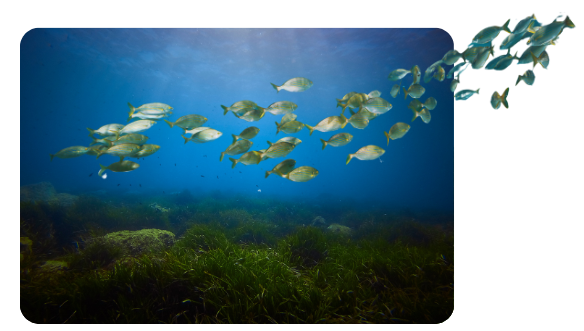Story
View from above: monitoring the impacts of flooding on river water quality using optical sensors
02 April 2024
New sensors have been installed on the Tamar Bridge in Devon as part of an international project

In collaboration with CSIRO, Australia’s national science agency and Tamar Crossings, scientists from Plymouth Marine Laboratory (PML) have deployed automated optical sensors on the Tamar Bridge, which spans the Tamar River between Devon and Cornwall in South West England.
Developed by CSIRO, the HydraSpectraTM sensors measure the reflected light spectra that can occur when there is a change in water colour associated with water quality. HydraSpectraTM can detect changes in water quality associated with high concentrations of fertilisers, sewage effluent and heavy metals.
The sensors have been added as part of the “Vis4Sea” project (which stands for “VISualisation and Assessment of water quality using and Open Data Cube FOR the weStern English channel”) funded by the UK Research and Innovation fund in collaboration with CSIRO’s AquaWatch Mission, which is enabling the use of large archives of data to monitor water quality.
Flooding events can carry agricultural fertilisers, sewage effluent and, in some locations, heavy metals from mining tailing ponds from the rivers to the coast – posing a risk to human health and to the environment through the deposition of high nutrients, suspended material, viruses and bacteria. This can, in turn, also have negative effects on seagrass beds and mud flats, which are important areas for the draw down of carbon dioxide from the atmosphere.
 Above: Installation of autonomous optical water quality sensors (HydraSpectra, CSIRO, Australia) on the Tamar Bridge for Vis4Sea. Thanks to Tom Harold (photo credits) and Matt Rowing-Parker from Paintel Ltd., for completing the installation.
Above: Installation of autonomous optical water quality sensors (HydraSpectra, CSIRO, Australia) on the Tamar Bridge for Vis4Sea. Thanks to Tom Harold (photo credits) and Matt Rowing-Parker from Paintel Ltd., for completing the installation.
The sensors have been positioned so that one pair looks directly up to measure the incoming sunlight, one looks at the sky to measure reflected sky light and the other looks down to the surface of the river. Powered through a small solar panel also fixed to the side of the bridge, this method provides a carbon-zero solution to measuring river water pollution.
Measurements from the sensors, supported by a programme of water sampling from PML’s Research Vessels Quest and Explorer, are providing information on the concentration of nutrients, suspended material, viruses and bacteria in the water. These measurements are used in synergy with data from marine buoys situated along the coast and satellite images, to provide a synoptic picture of the water quality in the Tamar River and how it affects coastal waters in Plymouth Sound and the Western Channel Observatory area.
Bio-optical oceanographer at PML, Dr Gavin Tilstone said:
“Rising occurrences of periodic flooding due to heavy rainfall are increasingly prevalent not only in the south-west of England but also on a global scale. This trend can be attributed to the warming of both inland water bodies and oceans, amplifying evapotranspiration rates and subsequently leading to elevated precipitation levels, often culminating in episodic flooding incidents.
The lessons learnt through Vis4Sea will be applied to the Fitzroy River in Australia, where periodic flooding is also becoming more frequent. It will also provide maps of areas that are not affected by flooding to allow conservation groups to regenerate Seagrass beds.”
HydraSpectra co-developer at CSIRO, Dr Tim Malthus, said:
“The Vis4Sea project represents a great opportunity for CSIRO to collaborate with PML and other partners on related water quality studies where flooding is becoming more impactful on downstream marine systems. The HydraSpectraTM device is designed as a low-cost and low maintenance device to monitor water quality components at high temporal frequency. This study represents a great application and test for the device. “

Related information
Watch BBC coverage of the installation https://www.bbc.co.uk/news/uk-england-cornwall-68684401
https://www.pml.ac.uk/News/Impacts-of-flooding-on-water-quality-particularly
